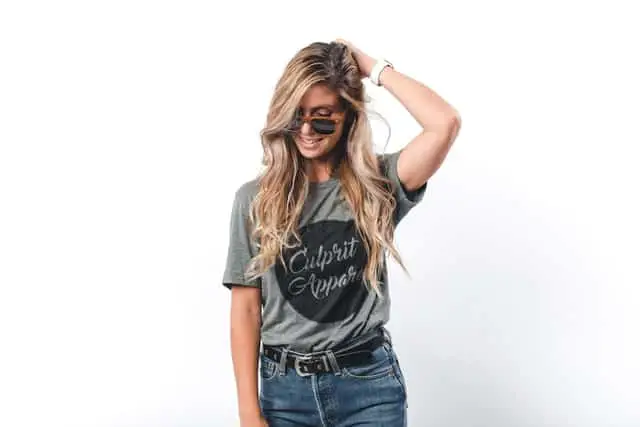You need to acquaint yourself with the modelling history if you ever want to pursue a career in Modelling. Although we’ve heard many stories and seen those in the modelling industry, it is still debatable whether Modelling is a career worth pursuing. After all, the process can mess with anyone’s self-worth, but the successes are the exception. However, there are many people in the industry with glamour, glitz, and dreams of making it big.
The fashion industry is one that is ever-changing, and this means that the role of models should also evolve with it. The modelling history date back from the living mannequins of the 18oos to the supers of the 1900s. Now, we have the social media girls of today in the fashion industry. For better understanding, we will walk you through the most memorable moments and significant players of Modelling. We will also look at every milestone that was a stepping stone that changed the history of Modelling.
The Modelling Evolution
Before these fashion models became cover models in magazines, there were fine art models in seductive poses for advertisements. This dates back to ancient Greece, where artists used human forms to inspire their artworks. What is known as supermodel now began with Lisa Fonasagrives Modelling was primarily a term carved out of the Middle French word ‘Modelle.’
Until the late 1800, Modelling was only used to describe people posing for portraits. However, with the invention of the camera, people now began to pose not only for painted portraits but for pictures. Hence, photos of men and women were included in newspapers.
Charles Fredrick Worth is considered to be the father of Modelling. He had his wife model his designs in the early 1850s. Before the 1850s, mannequins were used to model clothes instead of humans. So, Charles’ wife, Marie Augustine Vernet, was his first-ever live mannequin and the first-ever fashion model. Charles’ was not only the first designer to use live models, but he was also the first designer to sew his label on clothes. Charles founded the House of Worth, one of the most fashionable houses in the 1900s.
Modelling History: The First Modelling Agency
After Charles Frederick Worth began using live models for his design, Modelling became a profession. Many people followed suit, and with the invention of photography, the modelling industry boomed. The first and most prestigious modelling agency in the world was Eileen and Gerard Ford. Ford models were created in 1946 and opened doors for many models to build a career. What was simply just a hobby became a profession that paid bills and made many people famous.
There were a lot of successful models in the 1950s as more designers kept coming up with fashion ideas for display. Being a successful model in the 1950s meant that you had to be popular within the fashion community. So, many people rose to become big names in the modelling industry as they were continuously sorted after. Some of these big names included Dovina, Carmen Dell’Orefice, Dorethea Parker, and Wilhelmina Cooper. The people took advantage of the rising profession and made good of it. A successful model in the 1950s would make up to $25/hour, which was a lot of money at that time.
However, in the 1960s, there were a lot of modelling agencies popping out all over the world. As a result, many models did not travel to work, as they tend to work within any modelling industry that was thriving. Soon, London became an iconic fashion hub in 1960, thanks to the models. The fashion hub produced Jean Shrimpton, Joanna Lumley, and Twiggy, and it remains a modelling and fashion hub to this day.
Modelling as a Valid Profession
With the invention of the modelling industry, some people would like to think of Modelling as a legitimate profession. In the 1970s and 1980s, there were better wages and good working conditions for models. Many models also got huge cosmetic and hair endorsements and other fashion endorsements. However, to get the best, modelling competitions were used to find new models in the 1970s and 1980s.
In the 1980s, the very first Ford Supermodel of the World Competition was held to discover fresh models around the globe. In 1970, effective modelling and fashion industry milestones changed the modelling profession. An African-American model was on the cover of American Vogue in 1974. Her name was Beverly Johnson, and she was the first African-American model to achieve that break. Margaux Hemingway also signed an astonishing million-dollar contract in 1975, which led to her covering Time magazine. Her contract further solidified the fact that modelling was a good profession.
Modelling History: The Supermodel Era
Fast forward to the 1990s, there were a lot of models who were already making it big in the industry. Hence, the 1990s was named the decade of the supermodels with many supermodels faces everywhere. The likes of Naomi Campbell, Cindy Crawford, Christy Turlington, and Stephanie Seymour were and remained the most recognizable supermodels at that time.
The women were making trends and eventually became the face of the modelling industry in the world. However, when Victoria’s Secret and Sports Illustrated rose and became famous, the demand for models also rose. However, these brands were in the market for curvier and sexier models for their brands. The likes of Claudia Schiffer, Tyra Banks, and Heidi Klum were the face of these brands.
Modelling History: The social media and Digital Age
Now, the 2000s brought a whole new different aspect to the modelling industry. There was a whole new approach to Modelling than in the 1800s or 1900s, which was social media. The 2000s models are more involved with their fans now as they engage and share part of their lives. These fans get to see these models’ lives that no one gets to see before.
We have Gigi Hadid, Bela Hadid, Kendall Jenner, and Cara Delevingne, who have millions of followers on social media. The number of followers is usually a significant factor in a brand’s hiring models. The 2000s era brought a better market for models that looked different from the old-style models.
The modelling industry has constantly been evolving and improving over the years. There is an enormous market for models of all sizes, ages, colors, heights, and shapes. In addition, there are several types of models in the modelling industry. There is no better time to get seen by model scouts and live your dream of becoming a model.
Modelling History: Types of Models
Many people don’t know that there are a few different types of models in the modelling industry. Therefore, it is advantageous to know what kind of model you’d like to be. This will help focus your attention in that modelling direction. Here is a detailed list of different models.
Modelling History: Editorial or High Fashion Models
Editorial models are models who work in the fashion industry. This term describes the use of photos to tell a story. Editorial models work for most fashion firms and appear on the covers of worldwide fashion publications. Hair, skincare, trendy beauty or fashion hacks, newest cosmetics, and other topics are most included in picture articles. Hence, these editorial models are highly sought after since they set the current fashion trends. These Fashion publications include Glamour, Vogue, and Elle.
Modelling History: Catalogue Models
These models are in much higher demand than ever before due to the internet boom. Catalogue models not only set the latest fashion trends in catalogues, but they also take over the internet world. How do they achieve this? They capture their client’s audience by resembling genuine people and using eye-catching advertising imagery. They also use well-written materials to get people to use their services or buy their items.
These models do not comply strictly with fashion model specifications; they require a captivating personality. In addition, they also need good skin, a positive attitude, hair, and of course, a million-watt grin.
Modelling History: Commercial Models
These models are not the usual 2000s models; instead, they can be any size, age, shape, color, or height to get their job done. Their job ranges from service marketing and product advertising to promotional events for travel, cosmetics, and cuisine. All they have to do is look good in retail apparel and be able to advertise a service or product. These models function in different digital, retail, television, and print industries.
Modelling History: Swimsuit and lingerie Models
The models are frequently misunderstood as glamour models; however, these two are interchangeable. Swimwear and lingerie models work with specialized clothing such as summer, swimsuits, and nightwear. They can also walk fashion runway shows, appear in commercial catalogues, and even appear in fashion editorials. Depending on their versatility, they work with different designers, brands, and retailers.
Modelling History: Child Models
Modelling now is not limited to grown women or men, but children can also become models. Children who are very cheerful, engaged, happy, or crowd-friendly are often sought after by modelling agencies. These children are usually between 0-13 years old and can work with various brands and designers. In addition, modelling agencies always look out for intelligent children and can engage and collaborate with strangers.
Plus-Size Models
Many people are unaware that there are options for plus-size models in the fashion and commercial industries. Most companies have a dedicated plus-size sector, thus expanding the modelling industry. These fashion industries are redefining the standard of beauty, which is different from the traditional mainstream or perfect models. Depending on their experience, plus-size models can walk runways and work for big fashion labels.
Glamour Models
Glamour modelling concentrates more on the appearance of the model. These models are explicitly used for commercial purposes, with their pictures appearing in magazines and other publications. These models must adhere strictly to the modelling agency guidelines. Glamour models always appear alluring and enticing.
Runway Models
These are the most popular and important models because they disseminate many fashion-related contents. These models must exhibit high fashion standards and usually work with many fashion designers. These designers fit these models into their collections. Hence, models with slim figures are highly picked and popular.
Modelling History: Conclusion
Since the 1800s, modelling has constantly evolved and is still improving. The growth of the modelling industry is a testament to the ever-evolving nature of brands and the growing desire for representation. Here, you have the history of modelling from the 1700s till now and the different types of modelling. If you ever desire to try the modelling profession, this will guide you in understanding modelling and help you make the right decision.







